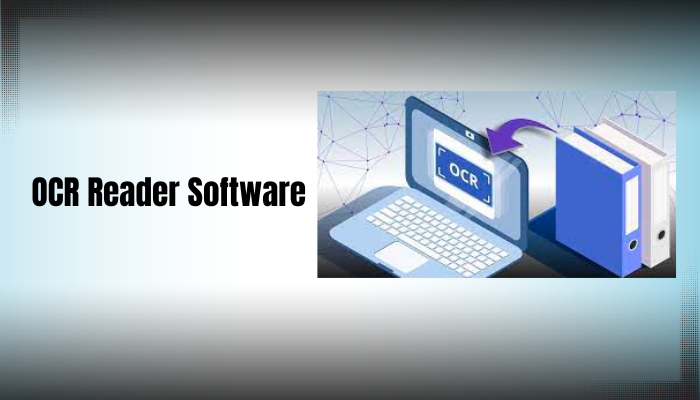Technology | 5 Minutes Reading
Best OCR Reader Software for Analyzing Text from Scanned Documents

Efficient document management is crucial in the field of digital forensics. One technology that plays a pivotal role in document processing is the Optical Character Reader (OCR). And, OCR reader software is one of the indispensable tools for forensic investigators to analyze text from scanned documents. In short, OCR software is beneficial for performing OCR forensics or OCR investigation. Among several solutions available, MailXaminer stands out as a true champion and best software when it comes to analyzing text from scanning documents and fulfilling other digital investigation needs.
In this article, we’ll explore the workings of software and the advanced OCR technology that helps investigators in various aspects. But, before that let’s briefly understand the technology.
What is OCR?
As mentioned earlier, OCR stands for Optical Character Reader. It is a technology that converts types of documents such as scanned paper documents, PDFs, or images captured by a digital camera into searchable data.
In addition, OCR technology software serves as an added important tool for addressing the associated challenges associated with handling printed documents.
In the field of OCR forensics investigation, this technology proves to be beneficial. Let’s find out how!
What is the Need for OCR Reader Software in Digital Investigation?
From a forensic point of view, this tool is highly essential for different reasons. Here are a few points highlighting its importance.
- Text Extraction from Image – During an OCR investigation process, forensic professionals may encounter image files such as screenshots, photos of documents, etc. containing text. OCR technology software can extract text from these images to help investigators analyze and understand the context of the case.
- Scanned Document Analysis – OCR technology aids in converting scanned documents to editable and searchable text. Making it easier for investigators to review and examine the content easily.
- Keyword Search & Analysis – In an investigation, forensic analysts frequently need to search keywords or specific phrases in a digital document. OCR reader software enhances the searchability of scanned documents, images, etc by converting them to readable text.
- Improved Data Processing – Investigators deal with a vast amount of digital evidence including emails, contacts, etc. Sometimes emails contain scanned documents and images as attachments. This in-built OCR technology in the software automates the text extraction from these attachments during OCR forensics.
- Metadata Analysis – OCR is not limited to analyzing visible text but it can also employed to examine hidden or embedded text within files. It is helpful in unmasking metadata or concealed information for the investigation.
Now that you are aware of this advanced technology and its purpose in the optical character recognition forensics process, let’s move on and discuss what the above-mentioned software looks like and its easy-to-perform steps.
Step-by-Step Procedure of OCR Reader Software for Extracting Text from Images
Step 1. Launch the software on your PC and click on the (+) to Add Evidence file(s) for investigation.

Step 2. After the evidence is added, customize how you want it to be scanned. In this step don’t forget to tick the checkbox beside ‘OCR’ for applying OCR technology to the software.

Step 3. You can do different searches and apply multiple filters to identify the exact information you’re looking for.

Step 4. If any image files containing text are attached in an email, then you can view the same in the attachment tab as shown.

Step 5. Once you’re satisfied with the search and found the information that you were looking for, you can export the findings to a desired file format.

Benefits of using OCR Technology Software
When you use the best software having built-in OCR, you don’t have to worry about accuracy and precision. Its advanced algorithms take care of extracting accurate information from the most complex and distorted text.
Secondly, you can handle a diverse range of document formats seamlessly. From emails and attachments to scanned documents and PDFs, you can rely on the tool to get the expected results.
In addition to that the tool has a user-friendly interface which allows investigators to navigate the software without any confusion. As a result, investigators can quickly access critical information and yield the desired outcome.
Final Verdict
OCR reader software plays a significant role in enhancing the capabilities of digital forensic professionals to a great extent. This technology provides cutting-edge solutions for text extraction and document processing that hugely contribute to the efficiency and accuracy of the OCR investigation. That’s why we have suggested the best software for your reference. Try the tool now for performing OCR forensics!
FAQs
Q- How does OCR work?
To operate, OCR examines the forms, patterns, and other characteristics of the characters in a picture or scanned document. These characters are recognized and converted into text that is readable by computers.
Q- Which kinds of documents can be processed by OCR software?
A wide range of documents, including handwritten or printed text, scanned documents, PDFs, and photos, can be processed by OCR reader software.
Q- Does OCR investigation support other languages or is it limited to English text?
OCR software usually has multilingual support. Numerous OCR programs can process text in multiple languages and have language recognition built in.
Q- Can handwriting be recognized by OCR software?
Certain OCR technology software can read and transform handwritten text, although the precision varies based on input quality and handwriting style, among other things.


